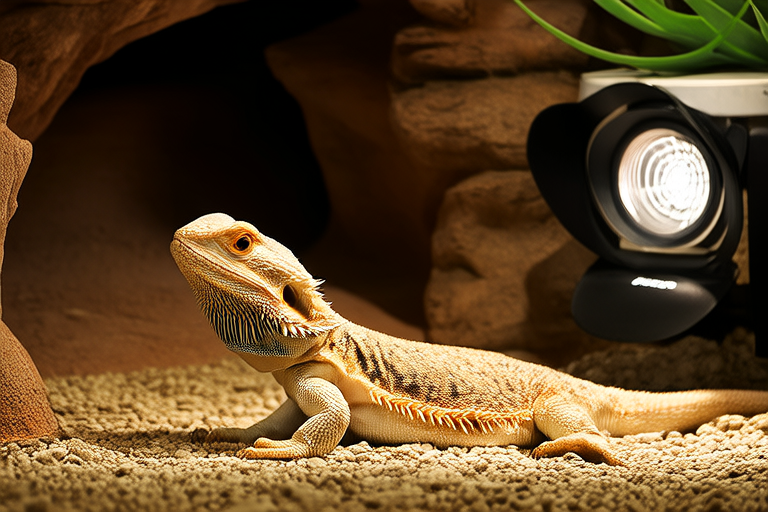How to Create the Ultimate Habitat for Your Bearded Dragon
Welcome to the comprehensive guide on how to create the ultimate habitat for your bearded dragon. Bearded dragons, scientifically known as Pogona vitticeps, are beloved reptiles among pet enthusiasts due to their docile nature and relatively low maintenance care. Providing them with a well-thought-out habitat is crucial for their health and happiness. This article will walk you through the essential steps to set up a perfect home for your bearded dragon.
Selecting an Appropriate Terrarium Size
The first step in creating the ultimate habitat for your bearded dragon is choosing the right terrarium size. A spacious terrarium allows your dragon to move around comfortably and exercise. For a hatchling, a 20-gallon tank is sufficient; however, as they grow, they will need more space. An adult bearded dragon requires at least a 40-gallon or larger terrarium to accommodate its size and activity level.
Proper Lighting Requirements: UVB Exposure and Heat Regulation
Bearded dragons require specific lighting conditions to thrive. Proper UVB lighting is vital for calcium absorption and overall health. Invest in a high-quality UVB lamp designed specifically for reptiles. Position the light so that it covers approximately 50% of the terrarium floor. The recommended UVB intensity is 10-12%, and the bulb should be replaced every six months to ensure effectiveness.
Heat regulation is equally important. Install a basking spot with a temperature range between 95-110°F (35-43°C). Use a thermostat-controlled heating pad or ceramic heat emitter to maintain consistent temperatures. Ensure there’s a cool side where the temperature ranges from 75-85°F (24-29°C) for thermoregulation. Always monitor the temperature using a reliable thermometer.
Substrate Choices
Selecting the right substrate is critical for your bearded dragon’s health. Avoid substrates like sand, which can cause impaction if ingested. Instead, opt for safer alternatives such as reptile carpet, paper towels, or tile. These substrates are easy to clean and pose minimal risk to your dragon’s digestive system. For adult dragons, some owners choose non-particle bedding like coconut fiber or reptile bark chips, but always supervise closely to prevent accidental ingestion.
Hiding Spots and Decorations for Environmental Enrichment
Providing hiding spots and decorations enriches your bearded dragon’s environment, making it more stimulating and comfortable. Incorporate caves, tunnels, or cork bark pieces as hiding spots. These items help reduce stress and provide a sense of security. Additionally, add branches and rocks for climbing and basking. Arrange these items strategically to create different levels within the terrarium, mimicking their natural habitat.
Diet Integration Within the Habitat
Feeding your bearded dragon within the habitat encourages natural behaviors and aids in digestion. Offer a variety of insects, including crickets, dubia roaches, and mealworms. Dust these insects with calcium and vitamin D3 supplements before feeding. Additionally, provide leafy greens and vegetables such as collard greens, mustard greens, and squash. Ensure fresh water is available daily, either in a shallow dish or by misting the enclosure.
Regular Cleaning and Maintenance Tips
Maintaining cleanliness is crucial for your bearded dragon’s health. Clean the terrarium thoroughly once a week, removing waste and replacing any soiled substrate. Spot clean daily to prevent the buildup of harmful bacteria. Disinfect the enclosure monthly using a reptile-safe cleaner, ensuring all residues are rinsed away before reintroducing your dragon.
Check equipment regularly, replacing worn-out or malfunctioning parts promptly. Monitor your dragon’s behavior and health closely, adjusting the habitat as needed to meet its changing needs. By following these guidelines, you’ll provide your bearded dragon with a safe, healthy, and stimulating living environment.
In conclusion, creating the ultimate habitat for your bearded dragon involves careful consideration of various factors. From selecting the right terrarium size and providing proper lighting to choosing appropriate substrates and integrating diet within the habitat, each element plays a crucial role in your dragon’s well-being. Regular cleaning and maintenance ensure that the habitat remains hygienic and conducive to your pet’s health. With this comprehensive guide, you’re well-equipped to offer your bearded dragon a fantastic home.
